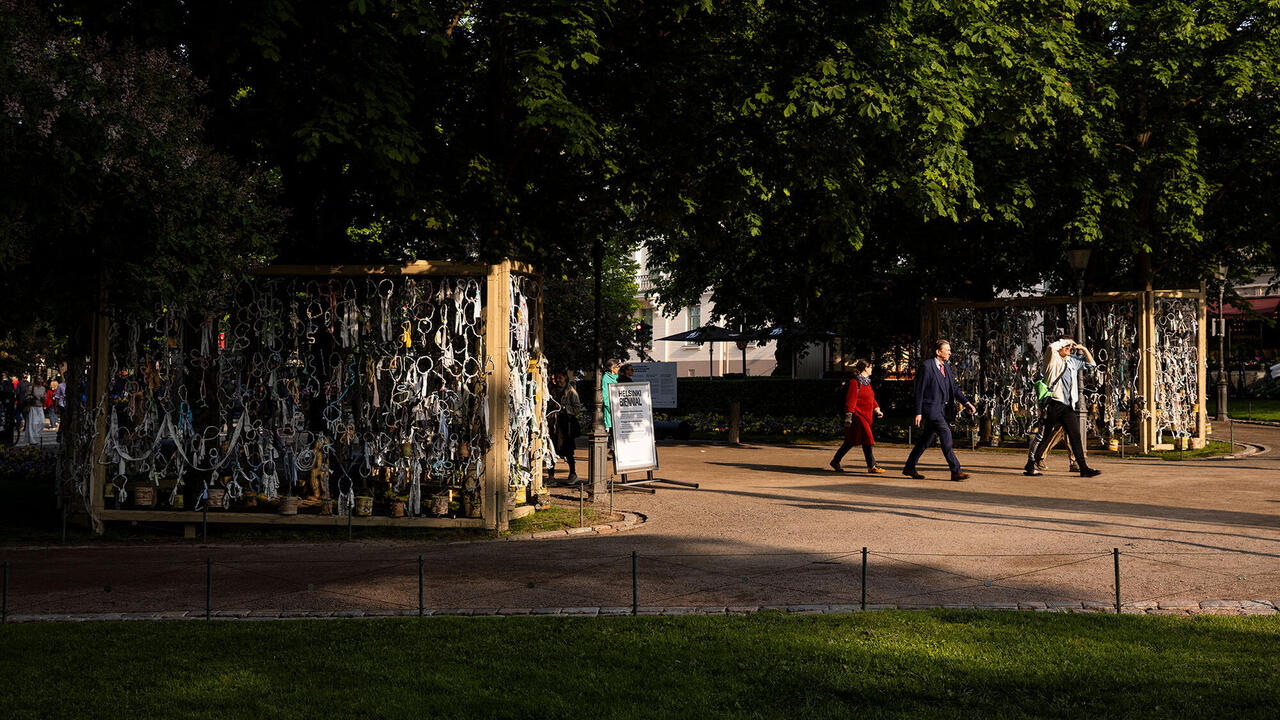Men in Black
John Harvey
John Harvey
The simplicity of the title, Men in Black, belies the complex and paradoxical rhetoric that informs John Harvey's history of one gender's relationship to one colour. Harvey's scholarly study is, in fact, a highly colourful journey through ten centuries of European history that contextualises the meaning of appearance through the dissemination of black clothing within male society. Harvey recognises that 'dress is the complication of social life made visible... of values made visible', and so, although he focuses on men, he cannot ignore the culture of women with which men must interact.
In order to identify social constructs and cultural contexts, Harvey makes 'black' into a linguistic suffix. A paradox which soon emerges is that black clothing signified, not only the incumbent social elite, but also the aspirant and ascendant elite. Following a chronological format, Harvey cites visual and literary images to show how the predominant connections of men in black - which I read as death, power and sexuality - intertwine and underpin even the superficial black of late 20th century chic, making the casual (yours and mine) wearing of black as a fashion colour no longer an innocent choice. For example, Harvey reads the black leather jacket as 'death-power and animal-power combined to add danger and charge to sexuality, in a way that can overlap with sex-abuse or Nazi insignia'.
By the late Middle Ages, piety was power and humility had authority. Thus, the spiritual black of religious grief, described by Peter the Venerable as the 'colorem humilitati et abjectioni' (the colour of abject humility), moves from being the mysterious dress of enclosed ascetics to become the dress of those who went out into the world 'to police Christendom and hold it together'. Notable in this age were the Spanish Dominican Inquisitors whose Black Friars were shrouded in the colour of self-denial: 'the colour of those powers that strike fear into the soul'. In our century too, black-clad men created a nightmare world of impending death for the 'pursued, accused, judged' in Kafka's The Trial, or portrayed the 'ominous mystery... the trope of the impersonal man...' as in Magritte's Not to Be Reproduced (1937). A uniform black is appropriated for all its most chilling historical associations in the black of the 'knightly, spiritual, military, ethnic, state police elite' of Himmler's Nazi SS. Harvey also draws attention to the bizarrely kitsch quality of Black Shirt uniform and behaviour, noting the 'dandy' in Britain's fascist leader Oswald Mosley, who had his black shirts tailored from silk.
The Dandy of course wore aesthetic black. Historically, the style was first ascribed to Regency royal hanger-on Beau Brummell, a fellow positively obsessed with tying his cravats. However, as Harvey reminds us, the true Dandy is a figure 'who makes simple and dark and especially black clothes fashionable'. As the 1838 edition of Le Dandy advised, 'English black is the shade most worn'. Harvey chooses Delacroix's Portrait of Louis-Auguste Schwiter, (1826-30), to portray the early dandy style of dress. This elegant 'look' is enhanced by the melancholy disposition of the handsome Baron, recalling earlier paintings in which the black garment of grief identified the forsaken lover. The Dandy's black grew from mourning dress, becoming a fashion colour following an extended period of mourning at the mid-15th century Court of Burgundy. It then spread throughout Europe from this influential but short-lived state before finding its place as the power-dressing, bespoke black of Victorian patriarchal Capitalism. Citing writers such as Dickens, Ruskin and Booth, founder of the Salvation Army, Harvey juxtaposes this rich material 'black' with the miserable 'blackness' of the industrial revolution's poor, which saw its most graphic visualisation in the work of Gustave Doré.
On crossing the Channel, 'le dandy' became less social and sartorial and more literary and symbolic. This provides Harvey with a framework for analysing appearance through a dark/light gender coding, in which black is the norm for men and the exception for women, and the paintings of Tissot and Renoir are cited to substantiate this observation.
In 20th century literature too, black returns as a powerful metaphor for negation of self in the world of work, placing the idea of pleasure in dress in the frivolous world of women and imbuing the display of self with a feminine characteristic to be feared by a masculine man. Concomitantly, black dress provided a cloak of seriousness for working women, as seen in Redgrave's painting, The Governess (1844), and of course for bereaved women, for whom 'the observances of death set the high style for life'. In Edwardian society, men and women shared black in luxurious, elegant evening dress, and it is in this formal context and in the uniform of business and bureaucracy - the Conservative's frock-coat - that the 20th century men in black survived the new, wider tonal democracy of the Labour candidate's 'lounge-suit'. A key theme of Harvey's chapter on our own time seems to be the subversion of tradition. For example, post World War Two, the black-clad Fascist youth has morphed 'evil' into 'sexy', creating a black that goes little beyond a fantasy costume for sadomasochists. In his concluding remarks Harvey maintains that the 'ultimate allusion of the colour black is to death'.
The itinerary of Harvey's historical journey is too busy to make Men in Black a good read, but its painstaking, analytical style provides an excellent work of reference that collates and challenges previous discussion. This is especially true of his provocative reading of paintings - for example he sees the black neck ribbons of Victorian women in paintings such as Tissot's Too Early (1873) as 'though they are ready tethered for yet unseen controlling hands'. This endless raising of points for further consideration compels the reader to look anew, re-read familiar images and recognise the previously unknown.
















